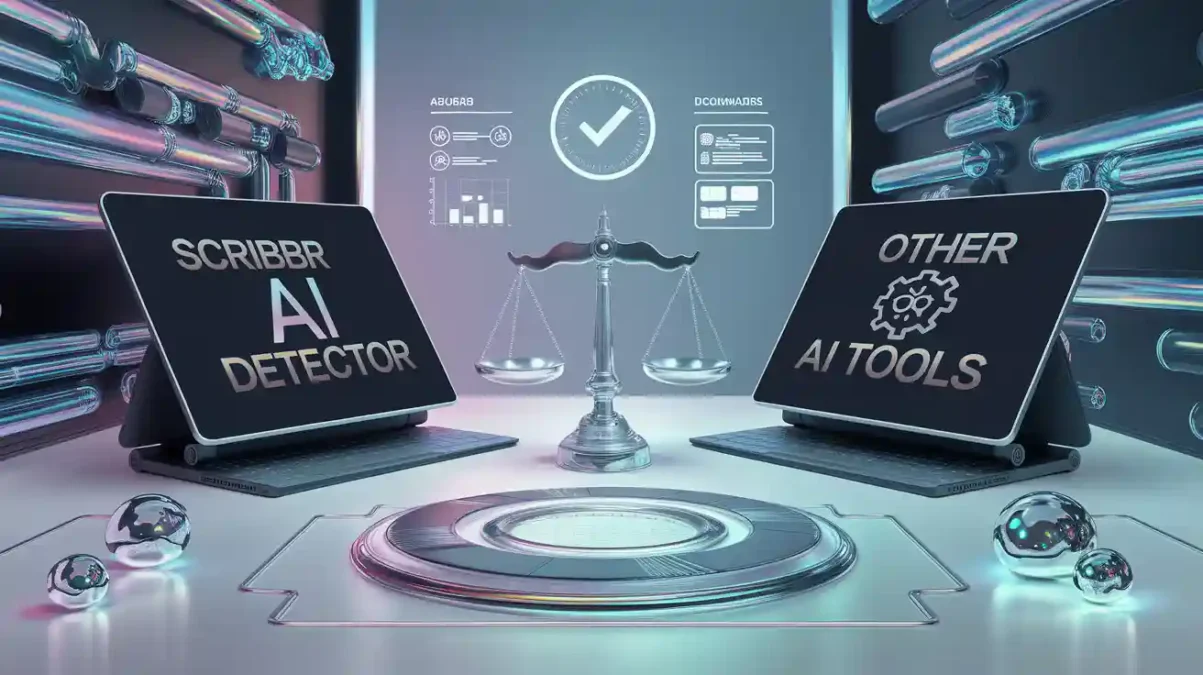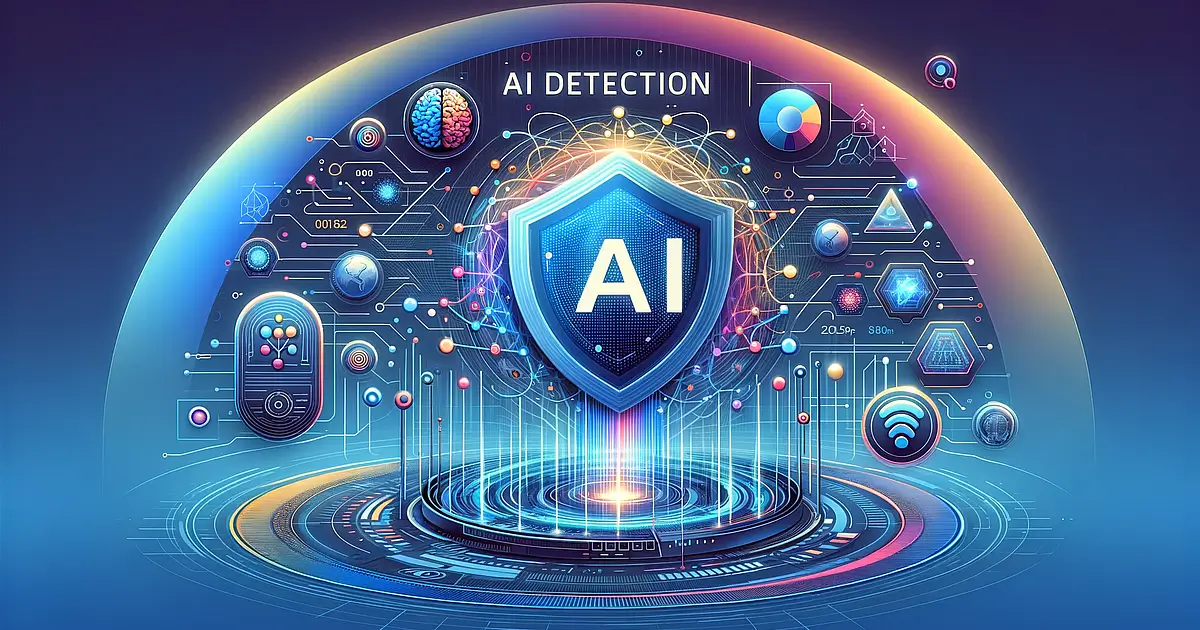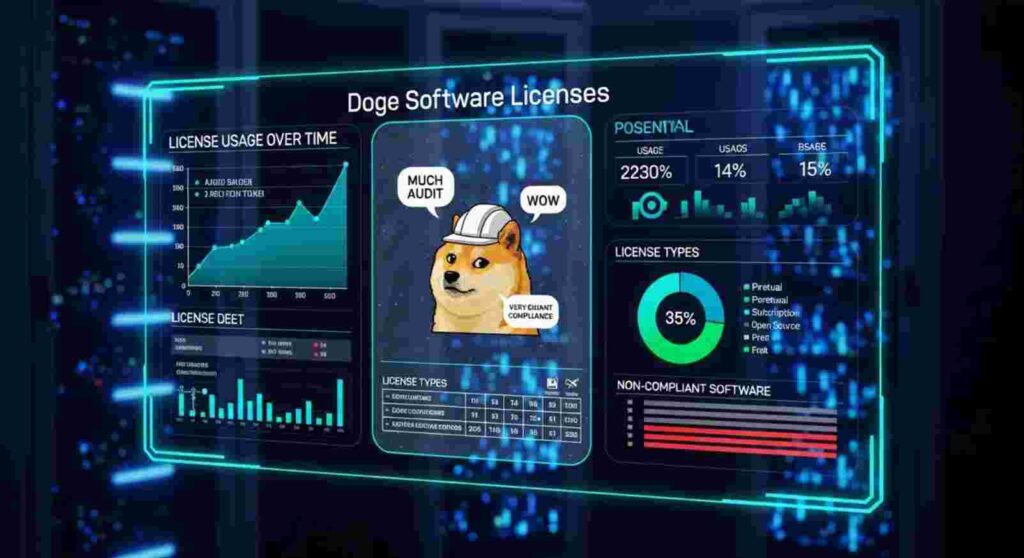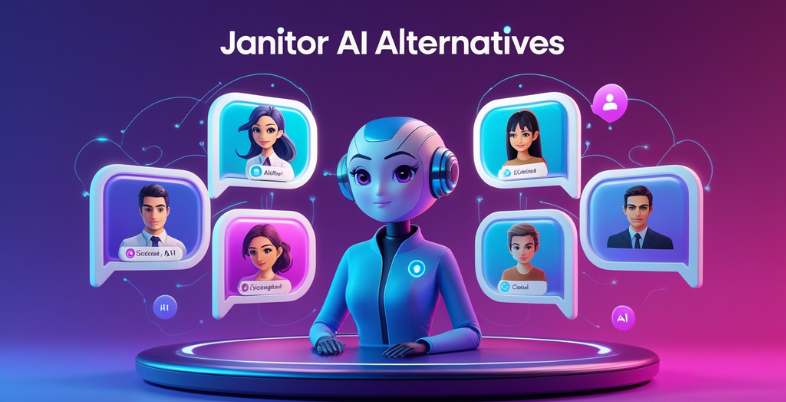The Scribbr AI Detector In the rapidly evolving landscape of artificial intelligence, the ability to generate human-like text has become both a revolutionary tool and a significant challenge, particularly in academic and professional spheres. As AI writing assistants like ChatGPT, Gemini, and Claude become more sophisticated and accessible, the line between original human authorship and machine-generated content has become increasingly blurred. This technological leap forward has sparked an arms race of a different kind: the development of AI detection tools designed to identify and flag text created by these models. At the forefront of this conversation for students, educators, and writers is the Scribbr AI Detector, a tool marketed as a reliable solution for upholding academic integrity. But what exactly is this tool? How does it purport to work? And, most importantly, can it be trusted? This article will provide a comprehensive, expert analysis of the Scribbr AI Detector, moving beyond marketing claims to examine its mechanics, its reported accuracy, its practical applications, and the profound ethical questions it raises.
The emergence of AI text generators has created a palpable sense of unease in educational institutions worldwide. The fundamental principles of academic work—critical thinking, original research, and the authentic demonstration of learning—are potentially undermined by the ease with which a student can generate an essay, a literature review, or even a complex code solution with a few simple prompts. This is not merely a hypothetical concern; educators are already reporting a surge in suspected AI-assisted submissions. In this climate, tools like the Scribbr AI Detector are presented as a necessary defense mechanism, a digital gatekeeper capable of restoring confidence in the evaluation process. However, the technology behind AI detection is inherently complex and fraught with its own set of limitations and potential for error. Relying on such a tool requires a nuanced understanding of its capabilities. Blind trust can lead to false accusations, which can have severe consequences for students, and a false sense of security for educators. Therefore, a critical and informed examination is not just useful—it is essential for anyone considering integrating such a tool into their academic or editorial workflow.
https://i.imgur.com/example1.png
A conceptual image of the Scribbr AI Detector interface, showing text being analyzed with a result percentage displayed. The design is clean and academic, instilling a sense of reliability.
Understanding the Core Technology Behind AI Detection
To truly grasp what the Scribbr AI Detector is doing, one must first understand the fundamental principles that underpin most AI detection software. These tools are not magical oracles; they are sophisticated pattern-recognition systems built using machine learning, often a branch of AI called natural language processing (NLP). At their core, they function by analyzing the statistical properties and linguistic patterns of a given text and comparing them to vast datasets of known human-written and AI-generated content. The key differentiator between human and AI writing often lies in predictability and randomness. AI models, particularly those based on the Transformer architecture (like GPT), are designed to predict the next most probable word in a sequence. While this produces remarkably coherent text, it can also result in a more uniform, less erratic, and statistically “safer” output compared to human writing, which is often filled with idiosyncrasies, unexpected phrasing, subtle errors, and a wider range of perceptual and cognitive diversity.
Human writing is messy, creative, and influenced by a lifetime of unique experiences. We use colloquialisms, inject personal tone, sometimes meander in our thoughts, and employ a complex interplay of sentence structures. AI text, especially from earlier or less refined models, tends to exhibit a higher degree of consistency in sentence length, a more predictable word choice (avoiding true rarity or burstiness), and a certain “perfection” that can lack the subtle imperfections characteristic of human authors. AI detectors are trained to identify these tell-tale signs. They analyze metrics like perplexity (how surprising the word choices are) and burstiness (the variation in sentence structure and length). A text with low perplexity and low burstiness is more likely to be flagged as AI-generated because it hews closely to the statistical norms the AI model learned during its training, whereas human writing typically shows higher values in both areas, reflecting its unpredictable nature.
It is crucial to note that Scribbr does not develop its own detection algorithms from scratch. Instead, it acts as a distributor or interface for detection technology provided by a company called Turnitin. Turnitin is a behemoth in the academic integrity space, primarily known for its powerful plagiarism detection software. Their AI detection model has been trained on an enormous dataset of content, which is a significant advantage. This partnership means that when you use the Scribbr AI Detector, you are essentially using a consumer-facing version of the technology that many universities are integrating directly into their learning management systems. This connection to Turnitin lends Scribbr a considerable amount of credibility, as it is backed by decades of experience in academic text analysis. However, it also means that the limitations and characteristics of Turnitin’s detector are inherently shared by Scribbr’s tool.
A Detailed Examination of Scribbr AI Detector’s Features and Functionality
The Scribbr AI Detector presents itself through a clean, user-friendly interface designed for simplicity and ease of use. The process is straightforward: a user copies and pastes their text into a designated box on the Scribbr website and initiates the scan. There is a character limit for the free version, which encourages users to check shorter texts or to upgrade to a premium plan for longer documents like full-length essays or theses. Once the analysis is complete, which typically takes only a few seconds, the tool provides a result in the form of a percentage. This percentage represents the estimated amount of text in the submitted document that the algorithm believes was generated by an AI tool, such as ChatGPT. For example, a result of “35% AI-generated” suggests that approximately one-third of the text contains patterns consistent with AI writing models.
Beyond the simple percentage, the tool often provides a more detailed, sentence-by-sentence highlight view. This feature is arguably one of its most important functional aspects. Instead of just giving a vague score, it attempts to pinpoint the exact sentences or phrases that triggered its detection algorithms. This visual breakdown allows for a much more nuanced review than a single number could ever provide. An educator can see if the AI-like patterns are concentrated in specific sections, such as a formulaic introduction or a literature summary, while the analysis and conclusion remain clearly human-written. Similarly, a student using the tool to self-check can identify parts of their own writing that might inadvertently mimic AI patterns and revise them for greater originality and personal voice. This granular feedback is essential for moving from accusation to understanding.
Another critical feature to consider is the tool’s language capability. As of its latest iterations, the Scribbr AI Detector is optimized primarily for English text. Its accuracy when analyzing content written in other languages is not well-documented and is likely significantly lower. This is a common limitation for most NLP tools, as their training data is overwhelmingly in English. Furthermore, the tool is constantly evolving. As AI writing models are updated and improved, becoming better at mimicking human writing patterns, detection tools must also adapt. Scribbr, via its reliance on Turnitin, likely receives regular updates to its detection model in an attempt to keep pace with the latest versions of GPT, Gemini, Claude, and other large language models (LLMs). This ongoing development cycle is a cat-and-mouse game, where each advancement in generation technology prompts a corresponding advancement in detection technology.
| Feature | Description | Benefit |
|---|---|---|
| AI Detection Percentage | Provides an overall score estimating the proportion of AI-generated text. | Offers a quick, at-a-glance assessment of a document. |
| Sentence-Level Highlighting | Visually identifies specific sentences and phrases flagged as AI-written. | Allows for precise, granular analysis and targeted review. |
| High Accuracy Claim | Marketed as highly accurate, powered by Turnitin’s model. | Builds trust and credibility for users making important decisions. |
| Free Usage Tier | Allows for a limited number of checks without payment. | Provides accessibility for students and individuals to test the tool. |
| Data Security | Claims text is not stored or added to a database after analysis. | Addresses privacy concerns for users submitting sensitive work. |
The Paramount Concern: Assessing the Accuracy and Reliability of the Tool
The most pressing question for any user, especially an educator considering its use for grading or accusation, is: How accurate is the Scribbr AI Detector? The company itself, along with Turnitin, publishes high accuracy rates, often citing studies with numbers above 98% for documents where a majority of the text is AI-generated. However, these figures require careful contextualization. High accuracy in a controlled test on purely AI-generated content is very different from accuracy in the messy real world, where documents are often a hybrid mix of human and AI writing, and where variables like writing style, topic, and language proficiency come into play.
The biggest challenge facing all AI detectors, including Scribbr’s, is the prevalence of false positives. A false positive occurs when the tool incorrectly flags original human-written text as AI-generated. This is not a minor glitch; it is a fundamental risk inherent to the technology’s pattern-based approach. Certain writing styles are more susceptible to false positives. For instance, text written by non-native English speakers often demonstrates a more formal, structured, and predictable pattern of word choice and grammar—precisely the characteristics that can trigger AI detection algorithms. Similarly, writing in certain scientific or technical disciplines that require precise, formulaic, and objective language (e.g., methodology sections in research papers) can also be mistakenly flagged because it lacks the “burstiness” and creative flair that detectors associate with humanity.
“The greatest ethical risk in using AI detectors is the false positive. Accusing a student of AI misuse based solely on a detector’s score is irresponsible without further investigation and evidence.” — Dr. Emily Reed, Professor of Digital Ethics.
Furthermore, a savvy user can easily “beat” or fool AI detectors through a process often called “humanizing” or “paraphrasing.” This involves taking AI-generated output and manually rewriting it, using AI tools specifically designed to bypass detection, or using text spinners. Simple techniques like replacing words with synonyms, altering sentence structures, introducing minor grammatical quirks, or even adding intentional typos can significantly alter the text’s statistical fingerprint enough to evade detection. This creates a problematic dynamic where less sophisticated users may be caught, while those with a slightly deeper understanding of the technology can circumvent it, potentially punishing those who are already at a disadvantage. Therefore, an over-reliance on the detector can create a false sense of security, as it cannot catch all instances of AI misuse, especially when deliberate steps are taken to conceal it.
Scribbr in the Ecosystem: How It Compares to Other AI Detectors
The market for AI detection tools is crowded and growing. To understand Scribbr’s position, it’s helpful to compare it to some of its main competitors, such as GPTZero, Originality.ai, Copyleaks, and ZeroGPT. Each of these tools has its own strengths, weaknesses, and target audiences. GPTZero, one of the earliest and most publicized detectors, was created by a Princeton student and is popular for its accessibility and free model. It provides two key metrics: “perplexity” and “burstiness,” offering users a slightly more technical insight into why a text was flagged. However, its accuracy has been questioned as AI models have improved, and it can be prone to false positives, much like its competitors.
Originality.ai is a tool geared more towards content marketers, SEO professionals, and web publishers. It markets itself on high accuracy and the ability to detect text from a wider range of AI models, not just ChatGPT. It often includes additional features like a plagiarism checker alongside its AI detection, making it a more comprehensive integrity suite for commercial content. Copyleaks is another robust platform used by educational institutions and enterprises, boasting high accuracy rates and support for multiple languages. Its API allows for integration into other platforms, similar to Turnitin’s model. ZeroGPT offers a simple, free-to-use interface but provides less transparency about its underlying technology or accuracy metrics.

Scribbr’s primary differentiator in this field is its powerful branding and its direct association with Turnitin. For the academic world, the Turnitin name carries immense weight. Universities already have institutional licenses for Turnitin’s plagiarism database, so adding its AI detection feature is a natural and logistically simple extension. For an individual student or educator looking for a tool, using the Scribbr AI Detector feels like getting access to this institutional-grade technology without going through their university. This association is Scribbr’s greatest asset. However, it’s important to remember that the underlying technology across all these detectors faces the same fundamental technical and ethical challenges. The choice between them often comes down to factors like cost, user interface, specific feature sets (like sentence highlighting), and the credibility of the provider.
Navigating the Ethical Minefield of AI Detection
The deployment of AI detection tools is not a simple technical solution; it is an act fraught with serious ethical implications that must be carefully considered by any institution or individual before adoption. The most significant ethical concern, as mentioned, is the potential for false accusations. Being wrongly accused of academic dishonesty can have devastating effects on a student’s academic career, mental health, and sense of justice. If an educator uses a detector’s score as primary, unquestionable evidence, they risk causing profound harm. Therefore, a detection score should never be the sole basis for an accusation. It can, at best, serve as an indicator or a trigger for a deeper, more human-centric investigative process. This process should involve speaking with the student, reviewing their draft history, assessing their in-class participation and prior work, and evaluating their understanding of the submitted material through a verbal assessment.
Another major ethical issue is data privacy and intellectual property. When a user submits text to an online AI detector like Scribbr, where does that data go? Scribbr’s policy states that it does not store the submitted texts or add them to any database, which is a crucial privacy safeguard. However, not all detectors have such clear policies. Users must be extremely cautious about submitting sensitive, unpublished, or proprietary work to third-party online tools. There is always a risk, however small, of data breaches or unscrupulous use of data. For highly sensitive work, this risk may outweigh the benefits of using the tool.
Finally, there is a broader philosophical question about the role of AI in education and the message that a heavy reliance on detection tools sends. An approach focused solely on policing and punishment can create an adversarial atmosphere of distrust between students and educators. It may foster a mindset where the goal is simply to avoid getting caught, rather than to engage in authentic learning. A more productive approach might involve openly discussing the role of AI, establishing clear and reasonable policies on its acceptable use (e.g., for brainstorming or editing, but not for writing entire papers), and focusing on assessment methods that are inherently resistant to AI misuse, such as in-person presentations, oral exams, and assignments that require personal reflection and connection to specific class discussions.
Practical Applications: Who Should Use the Scribbr AI Detector and How?
Despite the caveats and ethical concerns, the Scribbr AI Detector does have legitimate and valuable practical applications when used appropriately and with a clear understanding of its limitations. Its utility varies significantly depending on the user and their intent.
For educators and professors, the tool can be a valuable part of a larger investigative toolkit. It should not be used to automatically fail a student, but rather as a diagnostic aid. If an instructor notices a sudden, inexplicable change in a student’s writing style, voice, or quality, the detector can provide a data point to confirm their suspicion. The sentence-highlighting feature is particularly useful here, as it allows the educator to see if the “AI-like” patterns are consistent throughout the paper or isolated to specific sections that the student may have struggled with. This can then inform a constructive conversation with the student, focused on understanding their writing process and ensuring they have truly mastered the material.
For students, the tool can be used as a self-check mechanism before submitting work. This is perhaps its most ethical and positive use case. A student might use AI tools legitimately for brainstorming ideas or overcoming writer’s block but then write the actual paper themselves. They could run their final draft through the detector to ensure that their own writing style hasn’t inadvertently been influenced to a degree that might raise flags. If a section is highlighted, they can review and revise it to strengthen their own voice and originality. This proactive use helps students learn to use AI responsibly as an aid rather than a crutch and protects them from unintentional missteps.
For content editors, journalists, and publishers, the landscape is different. In these fields, the issue is often about protecting against plagiarism and ensuring the authenticity of contributed work. An editor who receives a blog post from a new freelance writer might use the detector as a preliminary check to ensure the content is original and not simply repackaged AI output. Again, a positive result would not be grounds for immediate dismissal but would warrant a closer look and a conversation with the writer about their sources and process.
The Inevitable Future: The Cat-and-Mouse Game and the Road Ahead
The development of AI text generation and detection is a classic example of a technological arms race. It is a dynamic, ongoing battle with no permanent winner. As detection methods become more sophisticated, so too do the methods for circumventing them. The next generation of AI writing tools is already being designed with “undetectability” as a key selling point. They are incorporating more randomness, learning to mimic the burstiness and imperfections of human writing, and offering built-in “humanizer” features. Conversely, detection tools are expanding their training datasets, looking for more subtle and complex patterns, and moving beyond purely statistical analysis to perhaps include semantic and conceptual analysis to identify the hollow, factually shallow nature of some AI text.
This evolving landscape suggests that standalone detection tools like the Scribbr AI Detector may have a limited shelf life in their current form. The future likely points toward integration and a shift in strategy. Instead of a binary “AI vs. Human” output, we might see tools that provide a more nuanced “authenticity score” that assesses the depth of research, critical analysis, and original thought—qualities that are still exceedingly difficult for AI to replicate convincingly in complex tasks. Furthermore, the focus may shift from post-hoc detection to pre-emptive design. Educational institutions will likely increasingly adopt platforms that incorporate version history and digital provenance tracking, such as Google Docs’ history or Microsoft Word’s AutoSave features, which provide a transparent record of a document’s creation process from outline to final draft.

Ultimately, the long-term solution will not be a better detector but a fundamental rethinking of teaching and assessment. The goal should be to create assignments and evaluations that are inherently AI-resistant because they are personalized, iterative, and require a demonstration of integrated knowledge that cannot be found or synthesized by a language model alone. This includes emphasizing process over product, valuing class-specific insights, and incorporating more interactive and verbal demonstrations of learning. In this future, tools like the Scribbr, AI Detector may serve as a temporary bridge, but they will not be the final destination.
FAQs
Q1: Is the Scribbr AI Detector free to use?
A: Scribbr offers a limited free version that allows users to check a certain number of words or documents without a subscription. However, for extensive use, such as checking long theses or multiple papers, a paid premium plan is required. The free tier is useful for trying out the tool or for checking shorter pieces of text.
Q2: Can the Scribbr AI Detector be fooled or bypassed?
A: Yes, it is possible to bypass AI detectors, including Scribbr’s. Techniques include thoroughly paraphrasing and rewriting AI-generated content, using AI “humanizer” tools, manually introducing variations in sentence structure and word choice, and blending AI-generated text with original human writing. This is a significant limitation, as it means determined individuals can often evade detection.
Q3: My own original work was flagged as AI-generated by the tool. Why did this happen?
A: This is known as a false positive. It can occur for several reasons: if your writing style is particularly formal, structured, or uses predictable phrasing; if you are a non-native English writer; or if you are writing in a technical field that requires precise, objective language. These styles can lack the “burstiness” and unpredictability that detectors associate with human authors.
Q4: How does Scribbr’s detector compare to Turnitin’s built-in AI detection?
A: The Scribbr AI Detector is essentially the same technology as Turnitin’s AI writing detection feature. Scribbr licenses the technology from Turnitin to offer it directly to individuals. The core algorithm and accuracy should be very similar, though the interface and usage limits (like word count) are tailored for Scribbr’s consumer audience.
Q5: Does Scribbr store the text I submit for analysis?
A: According to Scribbr’s privacy policy, they do not store the text you submit to the AI Detector or add it to any database. The analysis is performed, and the text is then discarded. This is a critical privacy feature, but it is always good practice to review the privacy policy of any online tool before submitting sensitive work.
Q6: Is it ethical for students to use the Scribbr AI Detector?
A: Yes, when used as a learning tool, it can be highly ethical. Students can use it to self-check their work to ensure their writing maintains their original voice and has not been unintentionally influenced by AI-assisted brainstorming or editing. It helps students understand the boundaries of acceptable AI use and avoid unintentional academic dishonesty.
Conclusion:
The Scribbr AI Detector, powered by Turnitin’s technology, is a powerful and sophisticated tool that represents the current state-of-the-art in the fight to preserve academic integrity in the age of AI. Its user-friendly interface, sentence-level analysis, and association with a trusted name in academia give it significant credibility. In the right hands, it can serve as a useful diagnostic aid for educators an




